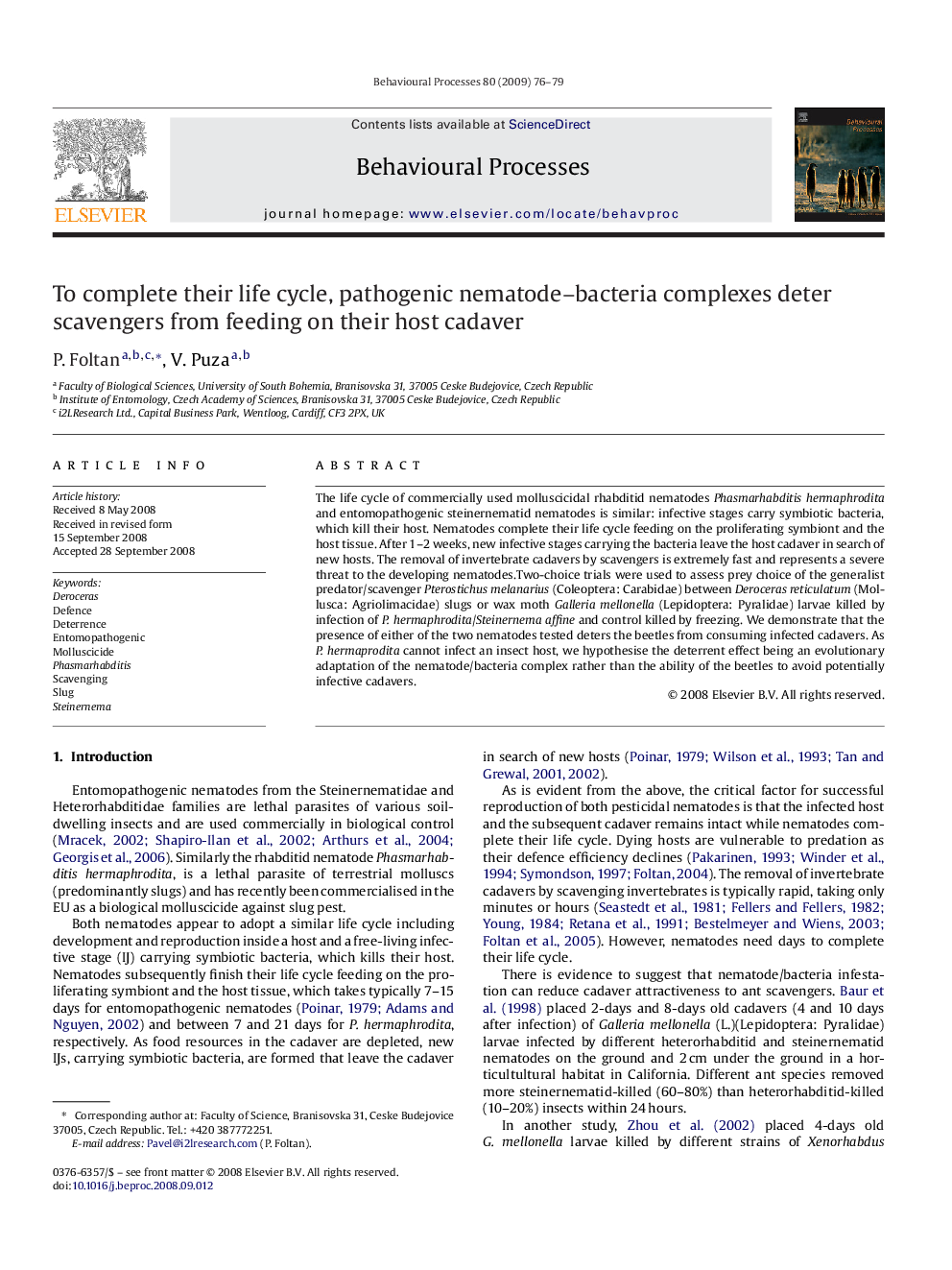| کد مقاله | کد نشریه | سال انتشار | مقاله انگلیسی | نسخه تمام متن |
|---|---|---|---|---|
| 2427577 | 1105967 | 2009 | 4 صفحه PDF | دانلود رایگان |

The life cycle of commercially used molluscicidal rhabditid nematodes Phasmarhabditis hermaphrodita and entomopathogenic steinernematid nematodes is similar: infective stages carry symbiotic bacteria, which kill their host. Nematodes complete their life cycle feeding on the proliferating symbiont and the host tissue. After 1–2 weeks, new infective stages carrying the bacteria leave the host cadaver in search of new hosts. The removal of invertebrate cadavers by scavengers is extremely fast and represents a severe threat to the developing nematodes.Two-choice trials were used to assess prey choice of the generalist predator/scavenger Pterostichus melanarius (Coleoptera: Carabidae) between Deroceras reticulatum (Mollusca: Agriolimacidae) slugs or wax moth Galleria mellonella (Lepidoptera: Pyralidae) larvae killed by infection of P. hermaphrodita/Steinernema affine and control killed by freezing. We demonstrate that the presence of either of the two nematodes tested deters the beetles from consuming infected cadavers. As P. hermaprodita cannot infect an insect host, we hypothesise the deterrent effect being an evolutionary adaptation of the nematode/bacteria complex rather than the ability of the beetles to avoid potentially infective cadavers.
Journal: Behavioural Processes - Volume 80, Issue 1, January 2009, Pages 76–79